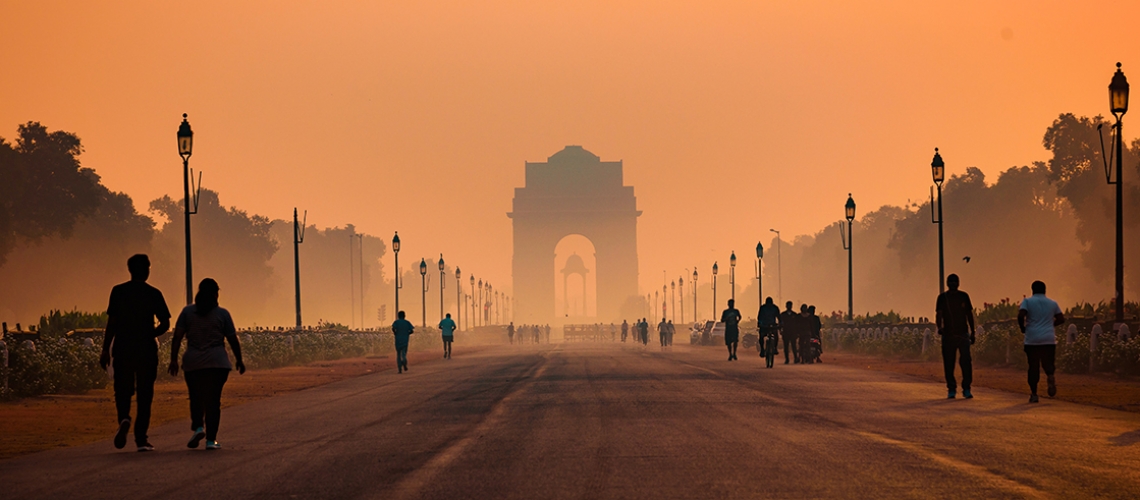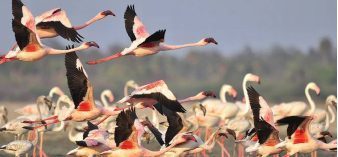
Air Pollution

What is Particulate Matter (PM10)?
Particulate matter, or PM, represents a category of pollution describing airborne particles measuring 10 micrograms or smaller. Particulate matter can include, but is not limited to, dust, soot, dirt, smoke, chemicals, bacteria, viruses, and liquid droplets. Since particle pollution has a range of chemical makeups and sources, the level of risk and associated health effects are ascribed to the size of particles rather than their composition.
What is Particulate Matter (PM2.5)?
PM2.5 refers to particles that are 2.5 micrometers in diameter or smaller. Unlike PM10, PM2.5 particles are not visible to the naked eye – they can only be seen with an electron microscope. PM2.5 particles are considered
among the most dangerous airborne pollutants because of their small size. PM2.5 can stay airborne for indefinite amounts of time, and when inhaled, PM2.5 can penetrate lung tissue and enter the bloodstream, causing heart, respiratory, and brain damage
What is Ozone?
Ozone is a gaseous pollutant and key component of smog, formed when sunlight or solar ultraviolet radiation causes nitrogen oxides (NOx) and volatile organic compounds (VOCs) to react. While other pollutants are typically emitted directly into the air by various sources, ozone is generally created in the atmosphere..
Top 3 coronavirus myths busted
Myth: Asymptomatic people can’t spread the coronavirus
The idea of the “silent spread” of COVID-19 – that asymptomatic people can spread the coronavirus – has spread like wildfire.
After some confusion, the World Health Organisation (WHO) clarified that most documented cases of “asymptomatic” spread actually turned out to be cases in which the person was presymptomatic and later developed mild or severe symptoms. Therefore, the WHO acknowledged that asymptomatic people can play a role in spreading COVID-19.
It’s also important to acknowledge that the term “asymptomatic” as used in everyday conversations can actually have three different scientific meanings:
• When you’re asymptomatic, you are carrying the virus but show no symptoms. However, you are still able to infect others.
• When you’re presymptomatic, you have recently contracted the virus and have yet to show symptoms and are also asymptomatic. You are still able to infect others at this stage of infection and will begin to show mild or severe symptoms.
• When you are mildly symptomatic, you do not experience pneumonia associated with COVID -19, but rather mild coronavirus symptoms. You belong to the most infectious types of spreaders, as it is highly likely that you’re out and about.
And several extensive studies suggest that cases of asymptomatic people that test positive for COVID-19 often turn out to be presymptomatic. However, all of these “asymptomatic” types of spreaders should be taken seriously.
According to the WHO, there are three primary ways that you can catch COVID-19:
• being coughed or sneezed on by someone with an active infection and symptoms5
• touching a surface that carries infected respiratory droplets and then touching your face (eyes, nose, or mouth)6,7
• being in enclosed spaces where infected airborne particles can build up
You can transmit the virus with only one mild cough or sneeze containing infected droplets. It’s easy to forget about such a mild symptom and think you never had symptoms at all. But one cough or sneeze is enough to infect others.
Research also suggests that, in confined spaces over prolonged periods of time, COVID-19 can be spread when you sing, yell, or even talk because infected droplets and aerosols from your mouth can hang in the air indefinitely, exposing people nearbyto infection even when you’re asymptomatic, presymptomatic or mildly symptomatic.
But you don’t have to get into the semantics of deciding if someone is asymptomatic,
presymptomatic, or mildly symptomatic, as our obsession with semantics could have a deadly impact.
And that’s why it’s so essential to follow prevention protocols, which can reduce your risk of contracting COVID-19 to nearly zero:
• Maintain two metres of social distance at all times.• Wear a protective face covering.• Wash your hands for 20 seconds throughout the day.• Don’t share any utensils. Following these easy steps will help keep us safe.
Myth: Pets can’t spread the coronavirus
The short explanation is that pet dogs and cats could get COVID-19 from humans and carry and spread the virus to other humans and animals.
It’s worth noting that animals are thought to be the sources of all coronaviruses. Although it is rare, scientists suspect the source of COVID-19 was a coronavirus that spread from an animal to a human at a wet market. This was the case with both SARS and MERS. In fact, scientists hypothesize that bats and pangolins are the likely source of COVID-19.
There’s not a lot of research showing exactly how your pets respond to when exposed to the coronavirus. But we do know that animals can get it from humans and spread it. Regarding COVID-19, it’s important to treat a pet like any other member of your family and take precautions to stop COVID-19 to flatten the curve.
For example, if you have a COVID-19 infection, you can potentially infect your dog with the virus by coughing or sneezing on them. Then, your infected dog, while sitting on your father’s lap, can then cough or sneeze, thus infecting your father by spreading the virus through mucous membranes.
So to be on the safe side, pet owners should socially distance their pets too. Don’t let strangers touch your pets while you’re outdoors. Infectious droplets could get into your pet’s mucous membranes or reach their face or paws from other pets. And if you see someone else’s dog or cat, don’t pet them.
Cats may be especially problematic when it comes to COVID-19, since cats have a protein receptor called ACE2 that’s very similar to one in humans that the coronavirus latches onto.
This means that cats might be as likely as humans to become infected with COVID-19 from infected respiratory droplets or transmission through the eyes, nose, and mouth.
So here’s what you should do to protect your pets and your household:• Keep your pets away from infected family members and from other people or their animals outside your home.
• Don’t let your cats or dogs wander outside beyond your home.
• Put dogs on a leash at all times outside the house, keeping them 2 metres away from people and animals.
• Don’t take your pets to places where large groups gather, such as dog parks or indoor pet playgrounds.
Myth: All masks provide equal protection from the coronavirus
Different masks provide different levels of protection from COVID-19.
Most localities and public health organisations have recommended wearing a simple cloth face covering in public. This will help protect you from large, infectious respiratory droplets.
But face coverings like cloth masks, bandannas, or gaiters provide limited protection from airborne aerosols in crowded places when social distancing is impossible.
Although cloth masks offer limited protection to the wearer, cloths masks are an effective strategy as a collective public effort – as long as everyone wears them. The fewer people that wear them, the less likely it is that this collective public effort will be effective.
There are higher quality masks that offer the wearer a higher level of protection. A certified N95, FFP2, or KN95 respirator mask is designed to protect the wearer.23 These are the only types of masks that provide high levels of personal protection from COVID-19.
In hospital settings, airborne aerosols that contain the coronavirus can build up to high concentrations in spaces where patients are in close quarters with medical staff.24
Worn properly, medical-grade respirator masks filter out most infectious aerosols and ensure that the air that the wearer breathes is virtually free of aerosolized viruses.25
Considering the higher effectiveness of N95, FFP2 or KN95 masks, it also makes sense that individuals, especially those who are at higher risk for severe illness, also benefit from higher levels of personal protection.
The takeaway
Ask your doctor or a medical professional for the most accurate prevention and treatment
information – and pay close attention to trusted sources of health news and information who use rigorous research and science to back up their claims.












